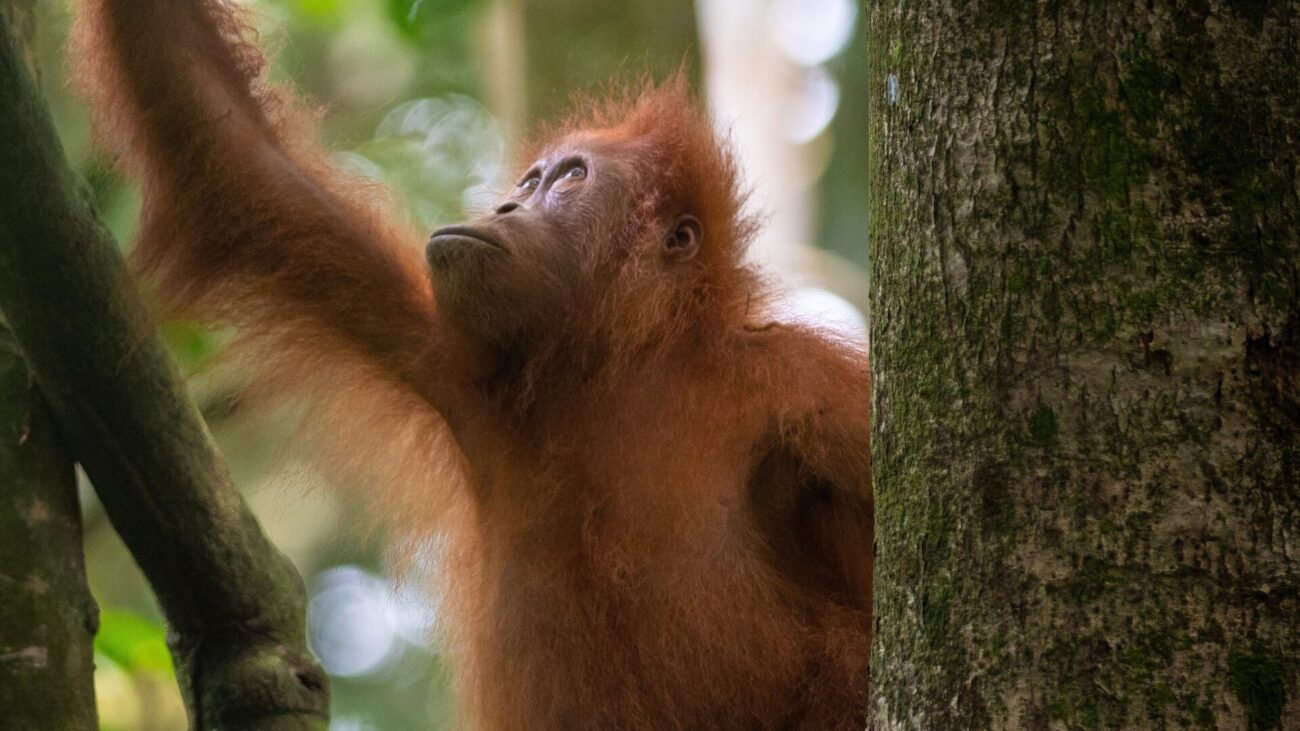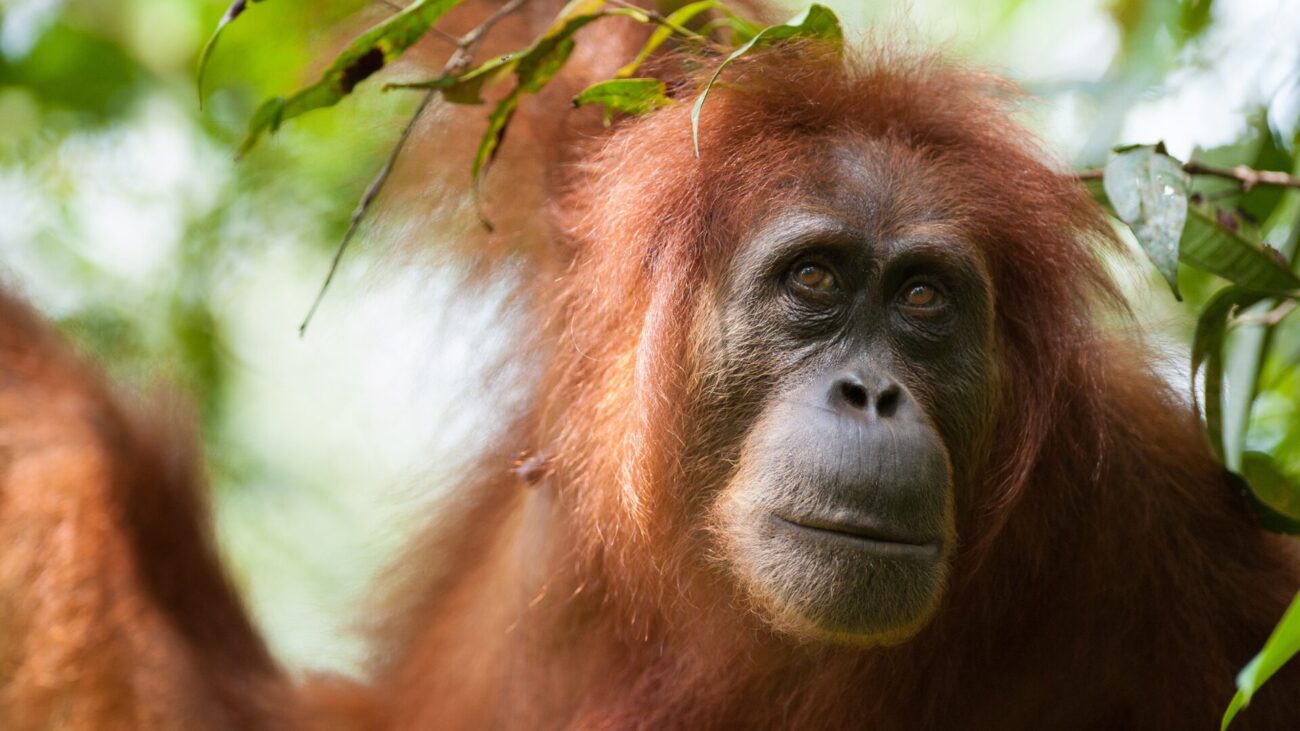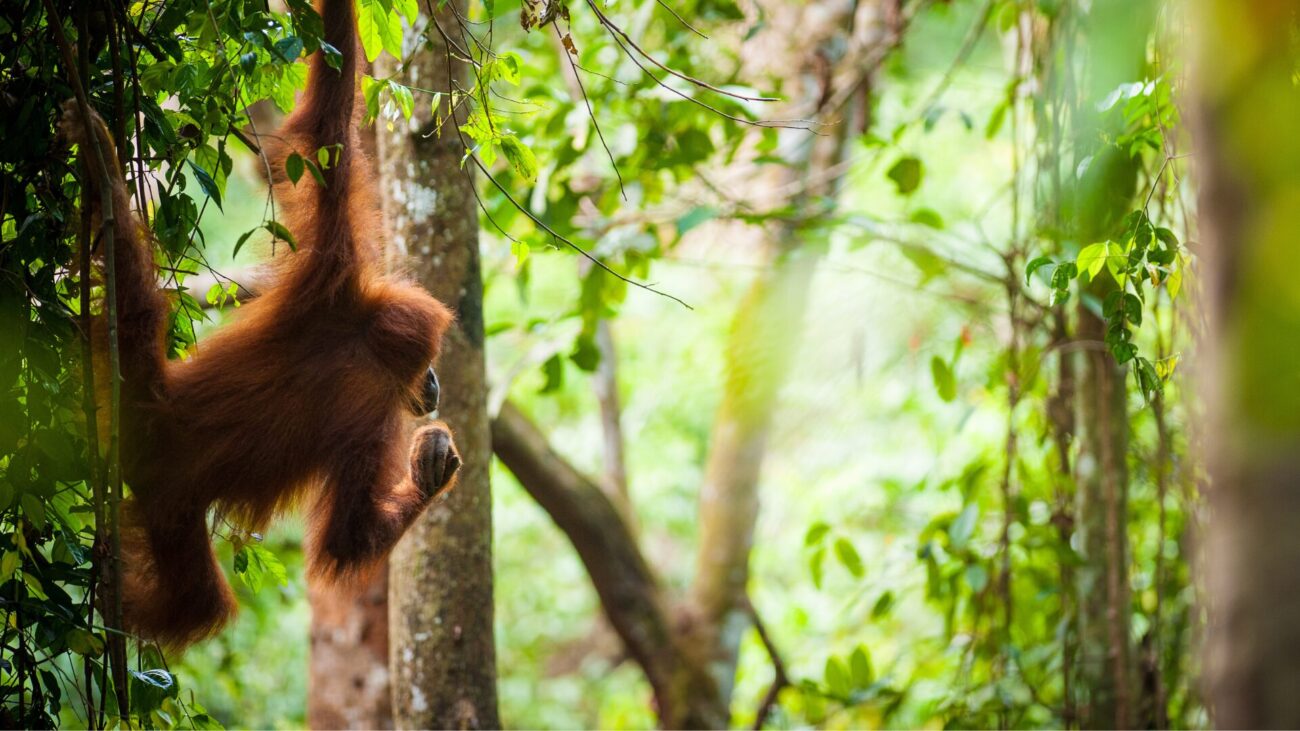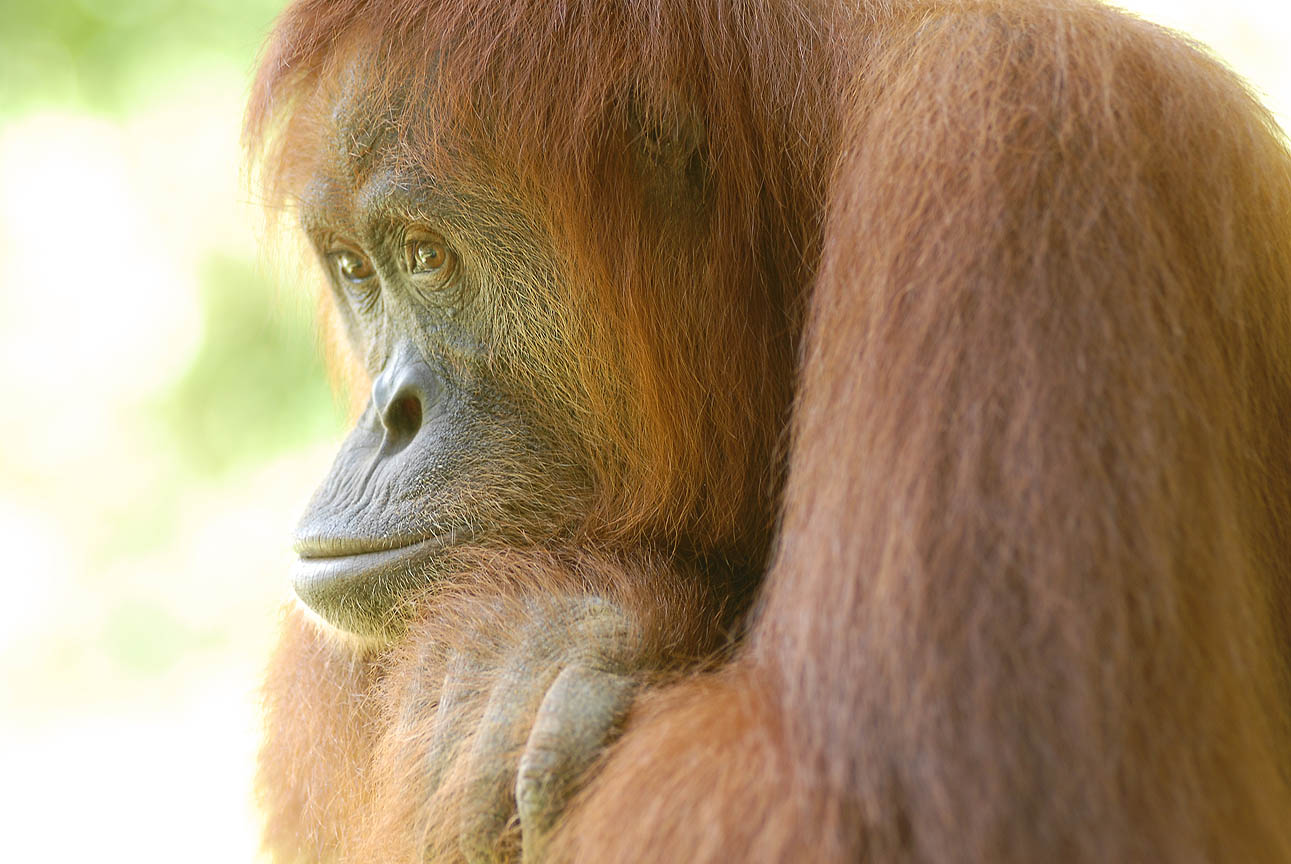Is Wildlife Conservation The Key to Mitigating Climate Change?
Next in our Earth Day series, we’re exploring how protecting wildlife could be a natural climate solution. It may surprise you, but orangutans have an important role in carbon capture and storage!

Is Wildlife Conservation a Natural Climate Solution?
Wildlife are often overlooked as a climate solution – dismissed due to their relatively low biomass and carbon storage. However, research shows that wildlife can significantly impact carbon capture and storage in plants and soils, making them vital components of climate mitigation. This research paper outlines how:
- Natural processes within ecosystems already capture and store approximately 50% of annual human-caused CO2 emissions from fossil fuel burning and land use change.
- Protecting forests, wetlands and grasslands is a natural climate solution, as it can prevent the release of massive amounts of carbon already stored in these ecosystems, with the added benefit of conserving millions of diverse species.
- Although wildlife may have comparatively low biomass within the ecosystem, they have an important role in driving ecosystem processes. So, wildlife conservation must be included as part of natural climate solutions.
- Protecting wildlife as a natural climate solution is called “animating the carbon cycle”. This involves not only protecting and restoring ecosystems but also protecting the ability of wildlife to move and interact with other species across landscapes. Therefore enabling wildlife to fulfill their role within ecosystems.

Even though animals might seem small compared to all the plants in a forest, they’re the tiny gears that keep the whole machine working.
In other words, wildlife influence the amount of carbon that is captured and stored in plants and soil, through their natural behaviours (or ecological functions).
These functions include foraging (eating), nutrient deposition, disturbance, organic carbon deposition (dropping food!) and seed dispersal (often through pooping!). These activities impact the temperature, soil composition and compaction, and plant respiration and reproduction. Therefore shaping the ecosystem and its ability to absorb and store carbon.

Orangutans Have an Important Role in the Ecosystem
Orangutans, as keystone species, are central to the health of rainforest ecosystems. Their actions shape the forest in ways that sustain thousands of other species, maintaining ecological balance and promoting a resilient web of life.
- As orangutans move through the forest, they eat a variety of fruits and later disperse the seeds far and wide through their droppings. This promotes forest regeneration.
- Each night, they build a new nest to sleep in. This creates gaps in the canopy and allows sunlight to filter through and stimulate plant growth in the lower forest layers.
- A diverse rainforest is better equipped to withstand threats like disease, climate change, and natural disasters, making orangutan presence a key indicator of a healthy ecosystem.
Protecting orangutan habitat is a vital natural climate solution. SOS and our partners strengthen the resilience of orangutan populations, their forest ecosystems, and local communities. By promoting wildlife movement and interaction, we boost carbon sequestration, protect biodiversity, and mitigate climate change. It’s a win-win!



You can help protect Sumatra's Orangutans. Click to get updates
